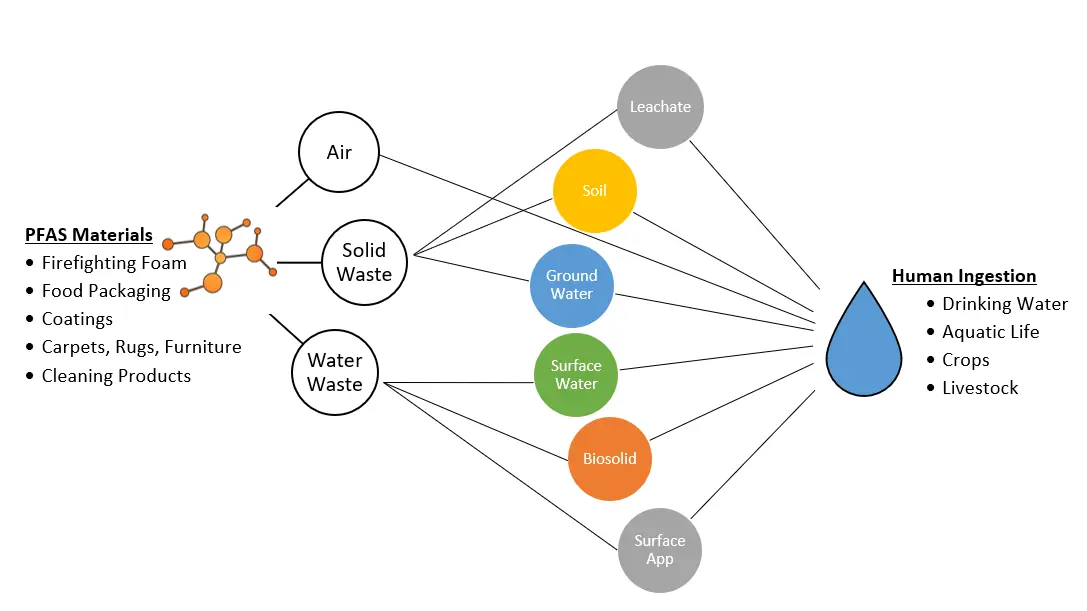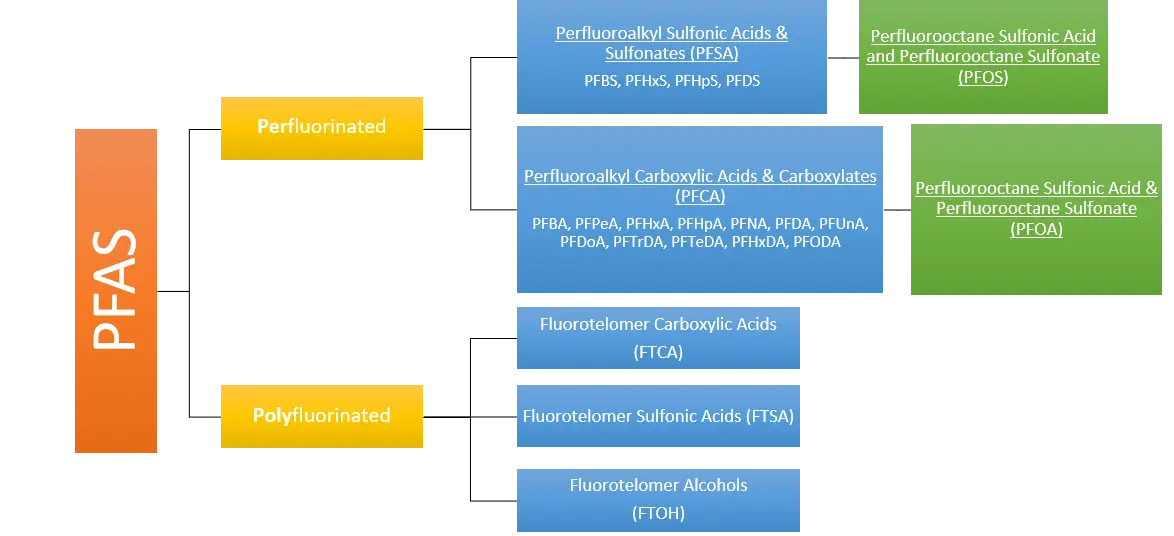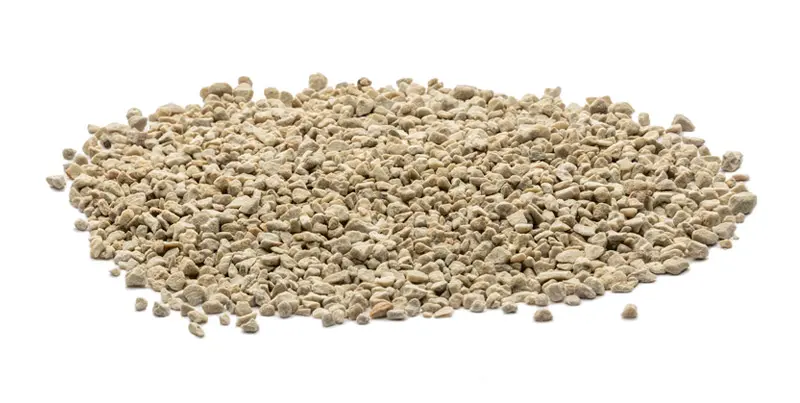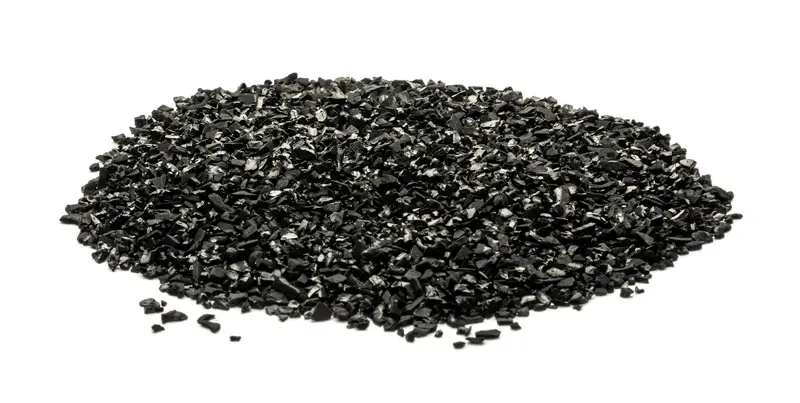What is PFAS?
Per- and poly-fluorinate alkyl substances are both known as “PFAS” or the “Forever Chemicals”. PFAS is grouped into polymers and non-polymers. Both of these are man-made chemicals have been manufactured for centuries in food packaging, stain repellents, textiles, fire-fighting foam, cleaning products, and military training equipment. PFAS chemicals are beginning to be phased out in the United States in order to eliminate the use of PFOA contamination. PFOA and PFOS are still manufactured internationally and used in consumer products. The unregulated PFAS compound is also known as “GenX” to the large American chemical company that use it in manufacturing process.
Why are PFAS compounds called Forever Chemicals?
PFAS compounds developed their name “Forever Chemicals” from the evidence that the compounds will not break down in the environment which allows them to survive “forever”. Due to the unique molecular structure of PFAS compounds—it is extremely difficult to break it down.
What are the Health Effects of PFAS Compounds?
PFAS compounds are endocrine-disrupting chemicals (EDCs) that over time will accumulate in the human body and be harmful to your health. Exposure to PFAS has shown several adverse health effects such as cancer, liver and kidney failure, decreased fertility, and thyroid disease. These chemicals have difficulty breaking down in the environment as well as the human body and accumulate over time.
Where is PFAS Found?
PFAS compounds were originally manufactured to make our lives easier by having products that were resistant to oil, water, heat or stains. Some of these products include:
Household Items: Cleaning supplies, jackets, bedding, and stain-resistant carpet, and athletic clothing
Cosmetic Products: Eyeliner, mascara, foundation, concealer, dental floss, etc.
Food Packaging: Pizza boxes, containers, microwave popcorn bags, hamburger wrappers.
Firefighting Foam: Aqueous film-forming foams (AFFF) was formulated with a PFAS chemical that helped extinguish fires more efficiently. Today, military bases that have used AFFF have seen significantly high levels of PFAS in their water resources.
PFAS is released into the air, solid waste, and water waste which then is discharged into drinking water, groundwater, rainwater, and surface water. Eventually the water is consumed by humans and living organisms where PFAS collects in the body over time. The map below depicts how PFAS materials can infiltrate the human body.

How Many Different Types of PFAS Compounds Are There?
PFAS is identified as chains of carbon and fluorine atoms with a carboxylic acid, alcohol, or sulfonic acid group. PFAS can be broken down into a number of subcategories as shown below.

Can PFAS Be Removed from Water?
Currently the best available options for removing PFAS from a water source is by pumping and treating the water with treatment medias such as activated carbon, organoclay, or resin. Hydrosil provides organoclay (HS-PF) and activated carbon (HS-ACC) as a solution to meet PFAS permit limits. Below are a few related case studies to these products:
Related Case Studies:
Can PFAS Be Removed from Air?
PFAS compounds have been found in indoor and outdoor air. With high incineration temperatures, PFAS compounds are destroyed. Air pollution devices have not been regulated for PFAS yet, but some states have implemented thermal oxidizers and granular carbon absorption units.
How are PFAS Compounds Destroyed?
Most sources indicate that PFAS compounds can be destroyed in incinerators with temperatures greater than 2000°F.
What are the Regulations for PFAS Compounds?
The Environmental Protection Agency (EPA) has begun taking swift action to protect water sources from PFAS contamination. The action plan includes researching and developing an understanding of PFAS exposure and innovative solutions, restricting PFAS from entering waterways, air, and land that impact human health, and remediation PFAS contaminated areas.
In 2024, the EPA announced the final National Primary Drinking Water Regulation for six PFAS compounds. The maximum contaminant level for PFOA is 4.0 ppt, PFOS is 4.0 ppt, PFHxS is 10 ppt, PFNA is 10 ppt, NFPO-DA (commonly known as GenX) is 10 ppt, and mixtures containing two or more PFHxS, PFNA, HFPO-DA, and PFBS is 1 (unitless) Hazard Index.
Industrial sources that discharge PFAS compounds are being evaluated. Many of these industries are being monitored at a state-level for PFAS compounds.
Meeting PFAS Limits
Hydrosil manufactures an organoclay and activated carbon that can reduce PFAS concentrations by 95%+. Contact a Hydrosil representative to discuss your PFAS application to determine which media is best for your application.
HS-PF
The HS-PF is designed to remove per- and polyfluoroalkyl substances (PFAS). The media is selective for removing PFAS (PFOA, PFOS, FTCA, FTSA, FTOH). The media is not used for potable drinking water applications, but typically for groundwater and landfill treatment.
For more information, visit the HS-PF product page.
HS-ACC Liquid Phase
The HS-PF is designed to remove per- and polyfluoroalkyl substances (PFAS). The media is selective for removing PFAS (PFOA, PFOS, FTCA, FTSA, FTOH). The media is not used for potable drinking water applications, but typically for groundwater and landfill treatment.
For more information, visit the HS-ACC product page.
- Activated Carbon
- Organoclay
- Activated Alumina

